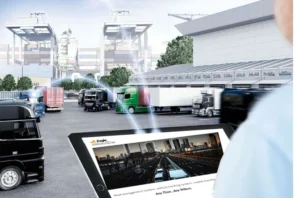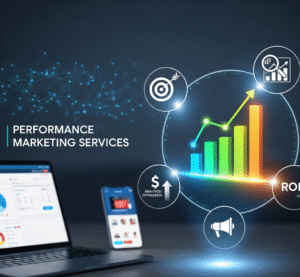
In the ever-evolving landscape of finance, a groundbreaking transformation is underway – the tokenization of real-world assets (RWA). This revolutionary process involves converting tangible nft for physical assets into digital tokens on a blockchain network, unlocking new possibilities for accessibility, liquidity, and efficiency. As we delve into the basics of tokenization, explore its underlying mechanisms, and anticipate its future impact, it becomes evident that this paradigm shift is gaining momentum in 2024.
The Surge of Interest in RWA Tokenization
In recent times, financial institutions, along with retail and institutional investors, have shown a keen interest in RWA tokenization. The process is increasingly being recognized as a game-changer, bringing the benefits of blockchain technology to traditional assets. What fuels this momentum is the higher interest rates in the current cycle, enhancing the economics of tokenization use cases. Real-world assets, once plagued by limited liquidity and high entry barriers, are now emerging as a hedge against market volatility.
Changing Perspectives and Regulatory Shifts
Governments and regulators worldwide are reevaluating their stance on real-world assets, prompting regulatory changes to accommodate tokenization. Jurisdictions are actively considering reforms to leverage and launch their real-world assets. The perception of tokenization has evolved, with major financial institutions such as BlackRock, Fidelity, JP Morgan, and HSBC embracing the concept.
The Mechanics of Asset Tokenization
At the core of asset tokenization lies the conversion of tangible assets into digital tokens on a blockchain. These tokens, serving as digital certificates of ownership, are stored immutably on the blockchain, ensuring tamper-proof integrity. Tokenization extends beyond stablecoins and NFTs, encompassing various asset classes like securities, stocks, investment funds, real estate, and commodities.
Real-World Applications and Use Cases
Tokenization introduces a plethora of use cases, transforming how financial assets are managed and traded. Financial instruments, investment funds, payment settlement, and real estate are among the sectors experiencing significant tokenization. Traditional finance giants are exploring tokenized products for operational and client-focused purposes, showcasing growing confidence in decentralized networks.
Potential Benefits of RWA Tokenization
The adoption of tokenization comes with a multitude of benefits. Blockchain’s transparency and immutability enhance the security of tokenized assets, providing a clear record of ownership. The decentralized nature of blockchain facilitates direct, low-cost, and efficient transactions, reducing reliance on intermediaries. Tokenization also enables fractional ownership, breaking down investment thresholds and democratizing access to assets.
Use Cases Explored
Tokenization’s impact spans various real-world assets, including financial instruments, investment funds, payment settlement, and real estate. Financial asset tokenization allows fractionalization, increasing accessibility and liquidity. Investment funds benefit from lower barriers to entry, improved liquidity, and operational efficiency. Payment settlement experiences real-time, automated settlement via smart contracts. Real estate tokenization revolutionizes ownership transfer, offering transparency, reduced costs, and streamlined fundraising.
The Market Landscape and Projections
The tokenization market is on the cusp of a major transformation, with industry experts predicting a multi-trillion dollar market for tokenized real-world assets by 2030. Estimates vary, ranging from Citigroup’s $5 trillion to Boston Consulting Group’s $16 trillion in tokenized digital-securities trade volume. This rise reflects the growing recognition and adoption of tokenized assets, potentially representing 10% of the global GDP by 2030.
Challenges and Hurdles
Despite the positive momentum, the introduction of tokenization faces several challenges. Regulatory issues, lack of standardization, interoperability concerns, and reluctant incumbents pose barriers to widespread adoption. Legal and regulatory hurdles, technical bottlenecks, and a lack of expertise remain impediments to seamless integration into existing systems.
Addressing Challenges and Building Momentum
The year 2023 witnessed significant progress in overcoming these challenges. The establishment of comprehensive crypto regulations in Europe, such as MiCA, and accommodating regulatory stances worldwide signal a positive shift. Interoperability concerns are being addressed with the introduction of numerous solutions and standards for tokenization protocols.
RWA Tokenization: A Transformative Force
Real-world asset tokenization emerges as a transformative force, bridging the gap between the virtual and real financial worlds. The blockchain’s credibility is consolidated by ensuring complete visibility and immutability of transactions. This integration paves the way for closer collaboration between crypto and traditional asset classes, transforming the financial landscape.
The Future Landscape of Tokenization
The future of tokenization promises dynamism and transformation, revolutionizing various industries. Security tokens adhering to regulatory frameworks have the potential to disrupt financial markets and industries, altering the execution of financial transactions. As intermediaries become less necessary, operational layers in trading, clearing, settlement, custody, and reporting may see significant reductions.
Conclusion
The rise of real-world asset tokenization in 2024 marks a pivotal moment in the evolution of finance. The process’s ability to unlock liquidity, enhance accessibility, and streamline operations showcases its potential to reshape traditional financial structures. As the challenges are addressed and momentum builds, tokenization is poised to become a cornerstone in the global financial landscape, ushering in a new era of efficiency, transparency, and democratized access to assets.







